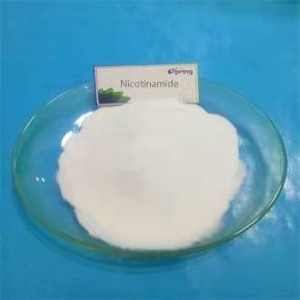Glabridin and niacinamide are two distinct ingredients commonly used in skincare formulations, particularly in products targeting skin whitening or brightening. While both have potential benefits for improving skin tone and reducing hyperpigmentation, they operate through different mechanisms and offer unique characteristics in whitening formulations.
Glabridin:
Glabridin is a natural compound derived from licorice root extract, known for its anti-inflammatory and skin-soothing properties. In the context of skin whitening, Glabridin mainly functions to inhibit the activity of an enzyme called tyrosinase, which plays a crucial role in melanin production. Melanin is the pigment responsible for skin, hair, and eye color, and excessive melanin production can lead to hyperpigmentation and uneven skin tone.
By inhibiting tyrosinase, Glabridin helps to reduce the formation of melanin, which can result in a brighter and more even complexion. Additionally, Glabridin's anti-inflammatory properties can help calm irritated skin and prevent further darkening of hyperpigmented areas. Its natural origin and gentle nature make it suitable for sensitive skin types.
Niacinamide:
Niacinamide, also known as vitamin B3, is a versatile skincare ingredient with multiple benefits, including skin brightening. Unlike Glabridin, niacinamide does not directly inhibit tyrosinase activity. Instead, it works by reducing the transfer of melanin from the melanocytes (pigment-producing cells) to the skin's surface. This helps to prevent the appearance of dark spots and promotes a more even skin tone.
Niacinamide also offers other advantages, such as enhancing the skin barrier function, regulating sebum production, and reducing inflammation. It can address various skin concerns, making it a popular choice in many skincare formulations, including those targeting hyperpigmentation.
Differences in Formulation and Compatibility:
When formulating skin whitening products, the choice between Glabridin and niacinamide can depend on various factors, including the specific formulation objectives, skin type, and potential interactions with other ingredients.
Stability: Niacinamide is relatively stable in formulations and is less prone to degradation when exposed to light and air. Glabridin, being a natural compound, can be sensitive to formulation conditions and may require careful consideration to maintain its efficacy.
Complementary Effects: Combining these two ingredients might offer complementary effects. For instance, a formulation could include both niacinamide and Glabridin to target different stages of melanin production and optimize skin brightening results.
Skin Type: Niacinamide is generally well-tolerated by various skin types, including sensitive skin. Glabridin's anti-inflammatory properties can be particularly beneficial for those with sensitive or irritated skin.
In conclusion, Glabridin and niacinamide are both valuable ingredients in skin whitening formulations, but they operate through different mechanisms. Glabridin inhibits tyrosinase to reduce melanin production, while niacinamide prevents the transfer of melanin to the skin's surface. The choice between these ingredients depends on formulation objectives, compatibility with other ingredients, and the specific needs of the skin type being targeted.

Media Contact
Company Name: Suzhou Springchem International Co., Ltd.
Email:Send Email
Phone: +86-512-57593213
Country: China
Website: https://www.sprchemical.com/
